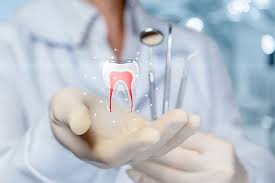If you’ve been told you need a root canal, it’s natural to feel a little anxious. However, understanding what root canal therapy involves and why it’s necessary can ease those concerns. Root canals are among the most common dental procedures, and modern techniques ensure they’re more comfortable and effective than ever before.
In this article, we’ll discuss what to expect during root canal therapy, why it may be necessary, and how it can benefit your oral health in the long run.
What is Root Canal Therapy?
Root canal therapy, also known as endodontic therapy, is a dental procedure designed to save a tooth that has been severely damaged or infected. The inside of the tooth contains a soft tissue called the pulp, which houses nerves and blood vessels. When this pulp becomes infected or damaged due to deep decay, repeated dental procedures, cracks, or trauma, it can lead to intense pain, swelling, or an abscess.
The goal of a root canal is to remove the damaged or infected pulp, clean the inner chambers of the tooth, and then seal it to prevent future infections. This process allows the tooth to be saved rather than extracted, preserving your natural smile and function.
Signs You May Need a Root Canal
Recognizing the symptoms of a tooth that may require root canal therapy is key to seeking timely treatment. Some of the most common signs include:
- Severe Tooth Pain: Persistent and intense tooth pain, especially when chewing or applying pressure, is often a strong indicator.
- Sensitivity to Temperature: If you experience prolonged sensitivity to hot or cold foods and beverages, it could indicate that the tooth’s nerve is compromised.
- Swelling or Tenderness: Swollen gums near the affected tooth, or tenderness when touched, may suggest an infection.
- Discoloration: A tooth that has become darkened or discolored may have nerve damage.
- Pus or Abscess: A visible pimple-like bump on the gums near the affected tooth can signal an abscess, which requires immediate attention.
If you experience any of these symptoms, it’s essential to visit your green bay orthodontist for an evaluation.
Why is Root Canal Therapy Necessary?
When the pulp of the tooth becomes damaged or infected, it cannot heal on its own. Without treatment, the infection can spread, leading to more severe complications such as bone loss around the tooth’s root, swelling in the face, or the loss of the tooth itself. Root canal therapy is necessary to:
- Relieve Pain: An infected tooth can be excruciatingly painful. Removing the damaged pulp and sealing the tooth helps alleviate the discomfort.
- Prevent Further Infection: An untreated infection can spread to surrounding teeth, gums, or even other parts of the body.
- Save the Tooth: Root canals preserve the natural tooth structure, which is always preferable to extraction. A natural tooth functions better for chewing and helps maintain the alignment of surrounding teeth.
What to Expect During the Procedure
Root canal therapy typically involves a few steps, but the process can be completed in one or two visits depending on the complexity of the case. Here’s what you can expect:
1. Initial Examination and X-rays
Your dentist or endodontist will first examine the affected tooth and take X-rays to assess the extent of the infection and the structure of the tooth. This step helps the dentist determine the best approach for treatment.
2. Local Anesthesia
Once the decision is made to proceed with a root canal, local anesthesia is administered to numb the tooth and surrounding area. This ensures you won’t feel pain during the procedure.
3. Creating Access
The dentist will create a small opening on the surface of the tooth to access the pulp chamber. Using specialized instruments, they will carefully remove the infected or damaged pulp from the inner chamber and root canals.
4. Cleaning and Shaping
Once the pulp is removed, the dentist will clean and disinfect the empty space to eliminate any remaining bacteria. The canals are then shaped to accommodate a filling material.
5. Filling and Sealing
After cleaning, the tooth’s inner chambers are filled with a biocompatible material called gutta-percha, which helps seal the space and prevent future infection. In some cases, a temporary filling may be placed if additional visits are necessary.
6. Restoration with a Crown
A tooth that has undergone root canal therapy is more fragile, so it’s often recommended to place a crown over the tooth to restore its strength and appearance. The crown protects the tooth from future damage and ensures you can chew properly.
Aftercare and Recovery
Most patients experience some mild discomfort or sensitivity after the procedure, but this can be managed with over-the-counter pain medication. It’s essential to follow your dentist’s aftercare instructions closely, which may include:
- Avoiding hard foods until the tooth is fully restored with a crown.
- Maintaining oral hygiene by brushing and flossing regularly to keep the area clean.
- Attending follow-up appointments to monitor healing and ensure the tooth is restored with a permanent crown.
The healing process is typically smooth, and most patients can return to normal activities within a day or two.
Root Canal Therapy: Busting Common Myths
Despite the benefits of root canal therapy, it’s often misunderstood. Here are a few myths and the truths behind them:
- Myth 1: Root Canals are Extremely Painful
- Truth: With modern dental techniques and anesthesia, root canals are no more painful than getting a filling. The procedure itself is designed to relieve pain, not cause it.
- Myth 2: It’s Better to Extract the Tooth
- Truth: Whenever possible, saving a natural tooth is the best option. Extractions can lead to complications like bone loss and shifting teeth, which may require more expensive treatments like implants or bridges.
- Myth 3: Root Canals Don’t Last
- Truth: When properly cared for, a tooth that has undergone a root canal can last a lifetime.
Conclusion
Root canal therapy is a safe and effective way to save a damaged or infected tooth. By removing the infected pulp and restoring the tooth, this procedure alleviates pain, prevents further complications, and allows you to maintain your natural smile. If you’re experiencing symptoms of a tooth infection, don’t hesitate to consult your dentist about whether a root canal might be right for you
Stay in touch to get more news & updates on News Break Blog!

